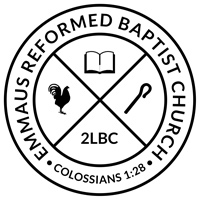Reading
Notice: This chapter will be covered in two parts. Do not read the entire chapter this week.
Read Know the Truth: Chapter 16: The Work of Christ: Biblical Teaching (Pages 205 – 215)
Questions for Discussion
1. What are the points of continuity and discontinuity between OT and NT atonement teaching?
2. What is meant by Christ’s prophetic office? ‘I am the truth’; ‘in [Christ] are hidden all the treasures of wisdom and knowledge’: explore the implications of these biblical statements for (a) Christian discipleship, (b) Christian doctrine, (c) human investigation in the arts and sciences, (d) forms of political and social organization, (e) human culture, (f) the home and family life.
3. Why is Christ our ‘great high priest’? What are the implications for (a) cleansing from sin, (b) a guilty conscience, (c) temptation and other trials, (d) Christian worship, (e) Christian fellowship? Find and study passages on each in the letter to the Hebrews.
4. State as precisely as you can the meaning of justification, supporting your definition from Scripture. Why can God not just ‘overlook’ our sin?
5. What is meant by the ‘imputed righteousness of Christ’, and what are its implications for the Christian’s attitude to failure?
6. How may ‘penal substitution’ be defended against the suggestion that it is unjust?
Milne, Bruce (2012-11-28). Know the Truth: A Handbook of Christian Belief (p. 223). InterVarsity Press. Kindle Edition.
Scripture Reading, Scripture Memory and Catechism
Please visit emmauscf.org/passages to view a suggested Bible reading plan, suggested scripture memory verse, and Emmaus’ catechism. Once there, please select the appropriate week of the year.
Other Resources
Lesson 21 PDF
Posted in Discipleship, Posted by
Joe.

